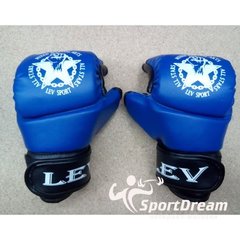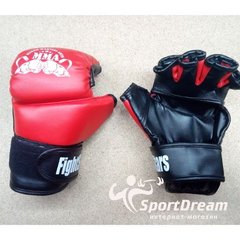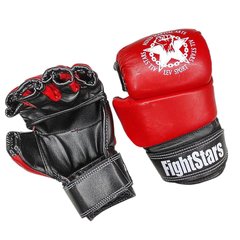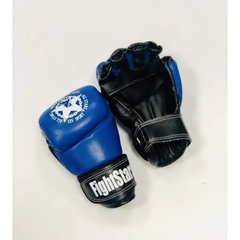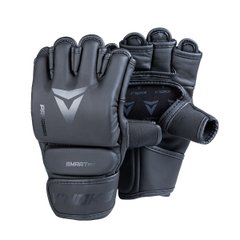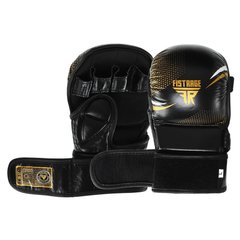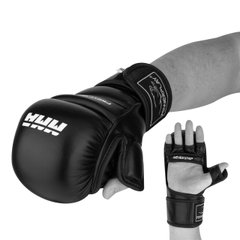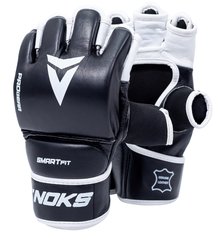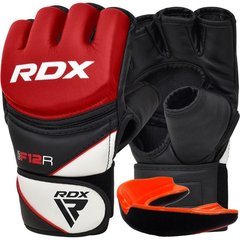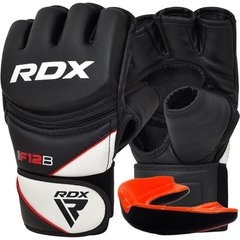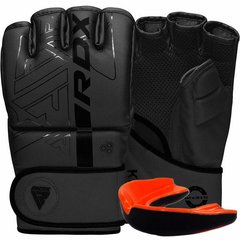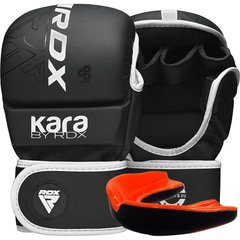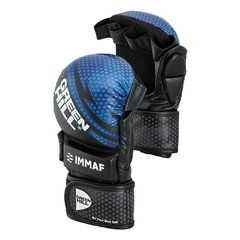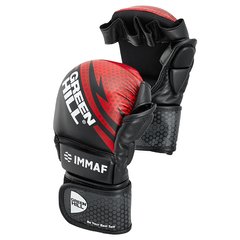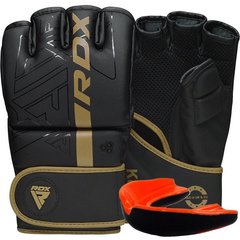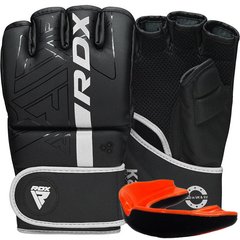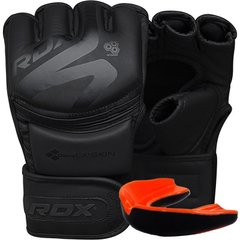|
Quantity
|
Out of stock
|
||
|
|
|||
Hand-to-hand combat (MMA) gloves are an essential piece of equipment for mixed martial arts athletes. They provide protection to the hands and wrists during training and competition, while allowing for grappling, striking and grappling.
Features of gloves for MMA:
1. Construction:
- MMA gloves have open fingers, allowing for easy grappling and grappling techniques. They are less bulky compared to boxing gloves, which provides greater mobility of the fingers.
2. Filler:
- Impacts in MMA gloves are softened by a layer of filler, which is usually made of foam or gel. The padding is concentrated in the fist area to protect the bones of the hand and prevent injuries.
3. Material:
- Genuine leather: High-quality MMA gloves are often made from genuine leather, which provides durability and comfort.
- Artificial Leather (PU): Cheaper glove options may be made from synthetic materials that also provide adequate protection but are less durable.
4. Fastener:
- MMA gloves usually have wide Velcro straps that go around the wrist. This ensures reliable fixation and support of the wrist during the fight.
5. Weight:
- MMA gloves typically weigh between 4 and 7 oz (113-198 g), allowing you to maintain punch speed while still providing adequate protection.
Types of gloves for MMA:
1. Training gloves (Training MMA Gloves):
- These gloves have a thicker layer of filler for extra protection during training. They are ideal for work on bags, paws and light sparring. They may be bulkier than competing models, but offer better protection.
2. Competition MMA Gloves:
- Competition gloves are lighter and have less filler, which allows you to maintain speed and accuracy of strikes. They provide basic protection while maximizing impact effectiveness.
3. Hybrid gloves:
- These gloves combine the characteristics of both training and competition models. They provide a balanced level of protection and mobility, suitable for a variety of training and sparring.
How to choose gloves for MMA:
1. Level of training:
- Training gloves with good protection are best for beginners to minimize the risk of injury.
- Experienced athletes can choose competitive or hybrid models depending on the specifics of their training and fights.
2. Type of training:
- If you plan to work more on striking technique, choose training gloves with thicker padding.
- For sparring and competitions, lightweight gloves that provide optimal speed and maneuverability are better suited.
3. Size:
- The gloves should fit the hand well, not be too tight or too loose. Most manufacturers offer sizes from S to XL, so the choice depends on the size of your hand.
4. Convenience and wrist support:
- Make sure the gloves provide enough wrist support, especially when hitting. A wide Velcro strap should fix the wrist well to avoid injuries.
MMA glove care:
1. Drying:
- After training, the gloves must be thoroughly dried to avoid unpleasant odors and extend their service life.
2. Cleaning:
- Regularly wipe the gloves with a soft cloth and use special products for skin care or synthetic materials.
3. Storage:
- Store the gloves in a dry, well-ventilated place away from direct sunlight and heat sources to avoid deformation of the materials.
Properly selected MMA gloves will provide comfort, protection and efficiency during training and competition, as well as help to avoid injuries.































































































